Vancouver Energy Management Students Head to Competition Finals
Last summer, the U.S. Department of Energy (DOE) invited Vancouver-based Assistant Professor of Energy Management Arman Bonakdarpour, Ph.D., to participate in the DOE’s Solar District Cup Collegiate Design Competition—a contest challenging participants to design and model distributed energy systems for a mixed-use campus or groups of buildings served by a common electrical distribution feeder. After a first-round victory in December, Bonakdarpour and his team of energy management students, Tina Liu, Erick Castro, and Shams Islam, will compete in the finals in April, along with the addition of Jorge Vivas to their team.
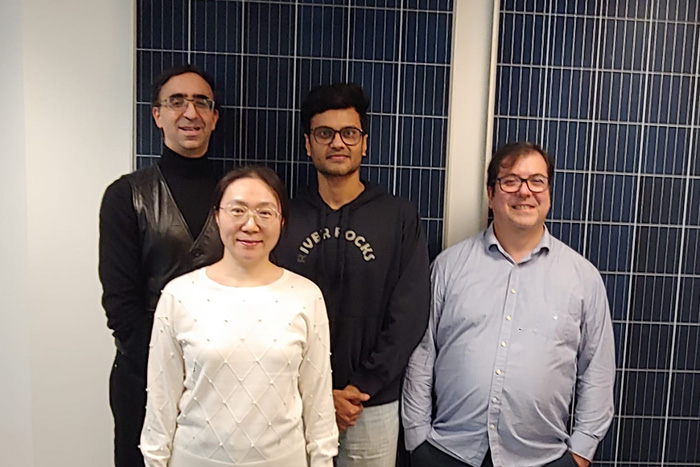
Pictured from left: Assistant Professor of Energy Management Arman Bonakdarpour and energy management students Tina Liu, Shams Islam, and Erick Castro are working on adding new elements to their project for the Solar District Cup Collegiate Design Competition’s final round in April. They have also brought energy management student Jorge Vivas (not pictured) to their team to compete in the finals.
Selected based on their experience, knowledge, and interests, Liu, Castro, and Islam were the competition’s first-round underdogs—most of the participating teams were larger, Bonakdarpour says. “The competition provided real-world insights into renewable energy systems and project delivery, bridging the gap between academic learning and industry challenges,” he adds. “Our team’s achievement serves as a powerful example and inspiration for other students.”
For the competition’s first round of online submissions in fall 2024, the team was tasked with designing and implementing a comprehensive solar photovoltaic system—this uses solar panels to generate electricity from sunlight—for several buildings across the north, central, and south campuses of Seattle Colleges in Washington State. Their project aimed to transform those buildings into renewable energy hubs that integrated solar solutions and maximized energy production while addressing carbon emissions and the rising cost of energy.
“Each system was tailored to the unique characteristics of its building,” explains Liu, who managed the distribution system impact studies and grid connection design for the first round of the competition. “We ensured optimal panel orientation and tilt angles for maximum irradiance capture.”
Castro, who led the development plan and financial analysis, says he and his teammates analyzed numerous buildings and locations, evaluating the environmental, engineering, and social aspects of the area. Their observations enabled them to propose a plan “that would make sense for the client in terms of energy justice, social impact, and reducing the carbon footprint, as well as being economically feasible.”
With his focus on engineering conceptual design, Islam was in charge of creating 3-D models to simulate panel placements, test various configurations, and refine the team’s designs based on efficiency and cost-effectiveness. “Our collaborative efforts enabled us to maximize energy production while minimizing costs,” he says.
“This strong collaboration among all team members was very evident, as all the project’s parts were strongly interdependent,” says Bonakdarpour, who guided his students through their project’s iterative rounds. By submission time, the students each contributed to writing the project documentation, including the executive summary.
With the team’s custom-designed solar energy solution for Seattle Colleges, the campuses would be equipped with a sustainable and cost-effective way to reduce reliance on non-renewable energy sources. The plan proposal struck a chord with the judges, but they identified some tweaks Bonakdarpour and his students need to make as they move on to the final rounds of competition.
While the finals are months away, the team has already begun preparing by revisiting and refining their initial design. Bonakdarpour, Liu, Castro, Islam, and Vivas are now tasked with new requirements, including energy storage. On their agenda for project improvements are adding batteries to the system, enhancing mechanical and electrical designs, and exploring how generating surplus energy can support the local community, among other things.
As they plan their project finalization timeline, Islam’s and Vivas’ primary role will be leading the design and optimization of building installations, as well as simulating and visualizing data; Castro is in charge of economic analysis and the project development plan, including schedules, land use, compliance of local and national codes, and environmental analysis; and Liu will further refine the team’s grid connectivity analysis to assess the overall impact of the system on the grid.
More News
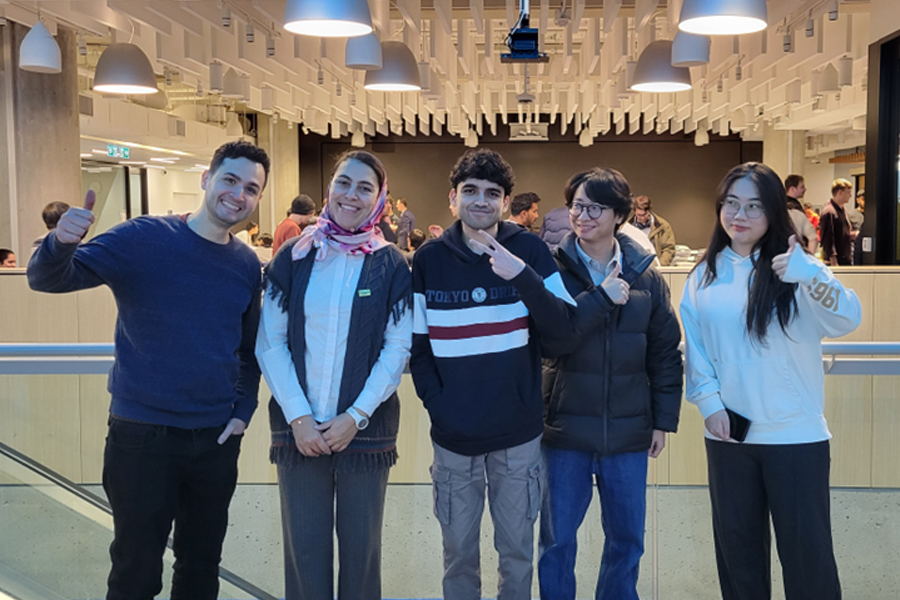
Vancouver Cybersecurity Students Hack Their Way to Third Place at CyberSci 2025 CTF Competition
New York Tech-Vancouver students achieved a significant milestone at CyberSci 2025, earning third place in the Vancouver region and 25th overall out of 86 teams across Canada.

Peer Success Guide Recognized at Conference
Computer science student Keerthi Kapavarapu visited San Francisco for the College Reading and Learning Association’s 58th Annual Conference, where she received the Outstanding Peer Educator Award.
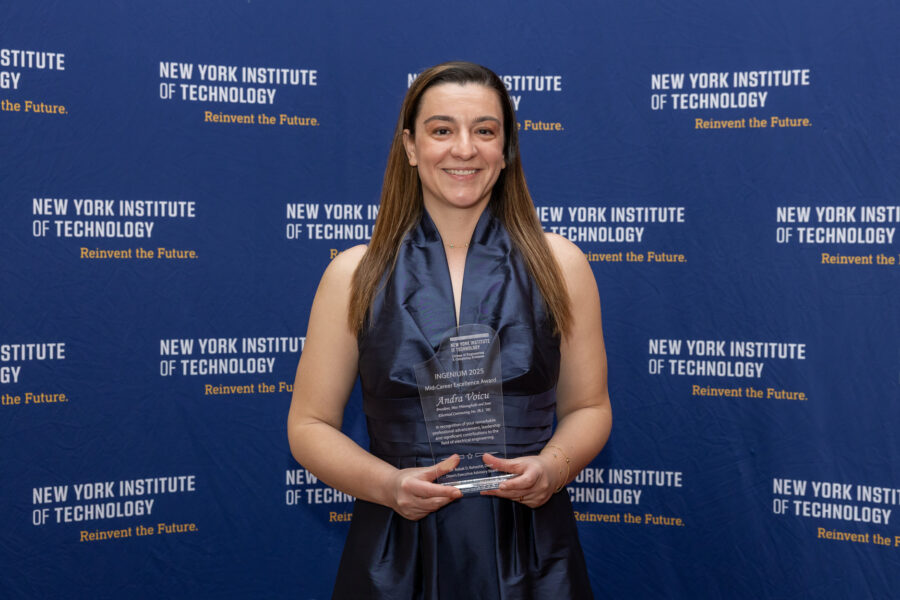
For the Love of Engineering
Andra Voicu (B.S. ’08) found the love of her life—electrical contracting—after joining her father’s business and working behind the scenes on municipal buildings projects in the New York area.

Student Veteran Spotlight: Dru Arana
Dru Arana joined the U.S. Navy to get field experience in construction and civil engineering. After a successful career, he decided to pursue a lateral shift into energy and sustainability engineering, enrolling in the College of Engineering and Computing Sciences.
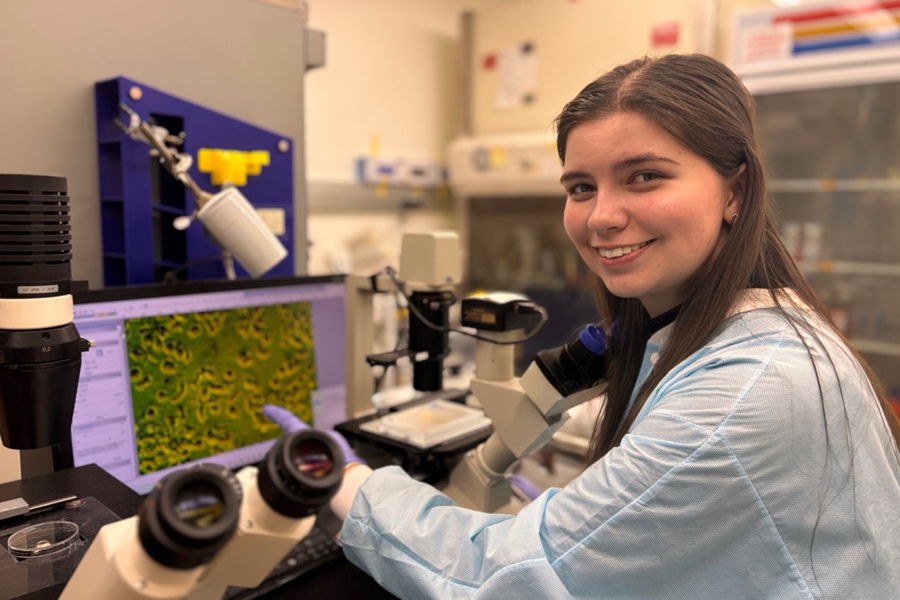
Intern Insight: Madalina Cupsa
Bioengineering student Madalina Cupsa began interning at The Mount Sinai Hospital in January and is now approaching one year as a research assistant.
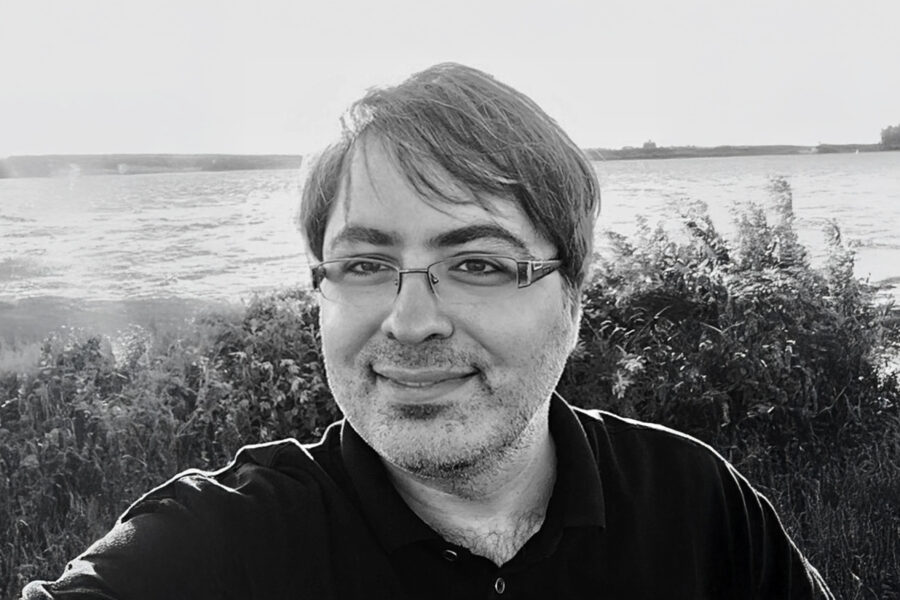
Engineering a Cancer Treatment Game Changer
A groundbreaking project co-led by the College of Engineering and Computing Sciences’ Steven Zanganeh, Ph.D., provides the world’s first functional, drug-testable, 3-D-printed human colon model.